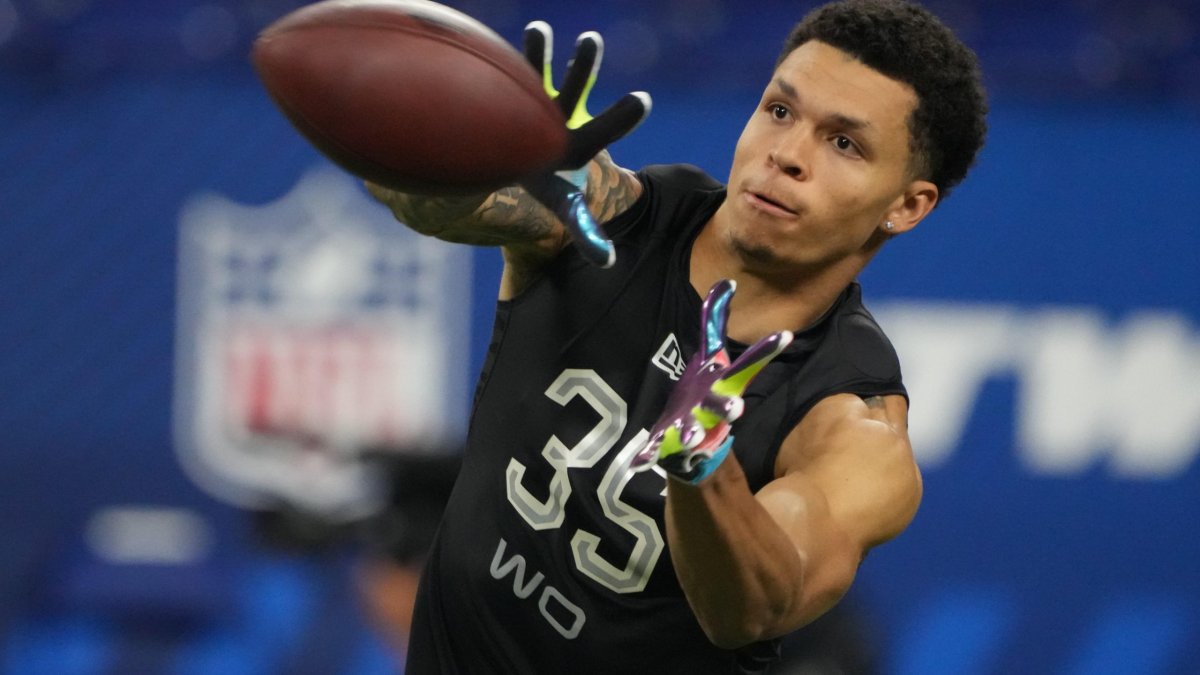Last week, I took an initial shot at projecting the 2022 NFL Draft wide receiver and running back classes into the NFL. Those pre-combine numbers are already obsolete, as draft boards shift wildly on the winners and losers of the various measurements and drills.
While my research shows that NFL Scouting Combine results have a significantly greater impact on draft position than actual NFL value and production, you can’t afford to fade the crowd coalescing around their favored prospects. Despite tremendous advancements in our ability to collect data on college prospects, the most meaningful single variable in determining NFL success is draft position.
In this analysis of 2022 NFL Draft prospects at the wide receiver position, I’m going to detail the quantitative process behind the results, including the importance of different features and how assumed draft position (via GrindingTheMocks and a number of post-combine mock drafts), age, athletic traits and production markers all blend into a single prediction. In this case, the prediction will be focused on fantasy football results, specifically the percentile for projected top-12 fantasy weeks at the position over the prospect's first two NFL seasons. We could extend the window further to cover a player’s entire career, but the point in the real NFL draft and fantasy rookie drafts is to see a return on investment earlier rather than later.
This analysis will cover all wide receivers from the 2022 class currently being selected in mock drafts, using their combine results and actual production figures to forecast fantasy success.
Click here for more PFF tools:
Draft Guide & Big Board | Mock Draft Simulator
Dynasty Rankings & Projections | Free Agent Rankings | 2022 QB Annual
Player Grades
METHODOLOGY
This analysis uses what is known as an ensemble model, or a blend of the results from different models which are then blended together to form a single, and hopefully more precise, final prediction. One of the models is tree-based, the other linear. The historical data from previous wide receiver classes from 2006 through 2019 were used to train the models, including the number of actual top-12 weekly fantasy finishes for those previously drafted wide receivers. The historical fantasy finishes are based on points-per-reception (PPR) scoring.
The features for each wide receiver in the models are as follows, ordered by relative importance and statistical significance. The stats are from the prospects’ best statistical season in which they played at least five games and logged at least 25 targets:
- Draft position
- Career market share of team receiving yards
- Draft age
- Career market share of team receiving touchdowns
- Best-season market share of team receiving yards
- Best-season yards per route run
- Hand size
- 40-yard dash time
- Weight
- Best-season yards per reception
- 10-yard split time
- Vertical jump
Draft position is the most important feature in predicting fantasy success for wide receivers, followed by production and athletic measurements.
Higher-drafted wide receivers at top programs are more often coming from receiving groups with two, three and even four drafted players, thereby diluting their shares of team production due to split workloads. To account for this, I adjusted up the career shares of team receiving yards and touchdowns for wide receivers by the number of wide receivers they played with during their careers. Each is assumed to be drafted in the top 100 picks.
2022 WIDE RECEIVER CLASS

Exclusive content for premium subscribers

WANT TO KEEP READING?
Dominate Fantasy Football & Betting with AI-Powered Data & Tools Trusted By All 32 Teams
Already have a subscription? Log in



 © 2025 PFF - all rights reserved.
© 2025 PFF - all rights reserved.